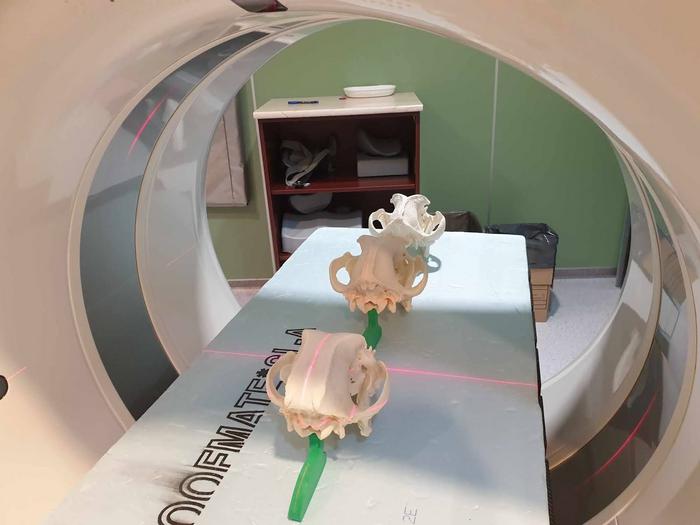The ELTE Eötvös Loránd University is home to the skulls of more than 150 dog breeds and other animals. To make this unique collection accessible to all, researchers digitised the skulls of 431 dogs, cats and wild relatives. The database can be used for educational and research purposes.

Credit: Credit: Kálmán Czeibert
The ELTE Eötvös Loránd University is home to the skulls of more than 150 dog breeds and other animals. To make this unique collection accessible to all, researchers digitised the skulls of 431 dogs, cats and wild relatives. The database can be used for educational and research purposes.
Tibor Csörgő, a researcher at ELTE, has been collecting animal skulls for decades to teach anatomy to biologists. The shape of the skull varies considerably between species and breeds, especially in dogs, where, for example, greyhounds have long skulls and the now popular French bulldogs have rounded skulls.
A skull biobank could be a valuable resource for education, medicine and evolutionary research.
For example, Zsolt László Garamszegi, Director of the HUN-REN Institute of Ecological Research, together with ethologists from ELTE and Niclas Kolm from Stockholm University, have based their findings in part on this collection, which shows that modern dog breeds bred in the last 200 years have larger brains than those with ancient origin, due to altered selection effects. The researchers wanted to make this unique collection of skulls available to all.
Similar research previously required researchers to visit collections in person. Today, however, it is possible to digitise skulls so that anyone can conduct studies at their desk, even on another continent. The digitisation was carried out by Kálmán Czeibert, a veterinary neuroanatomist in collaboration with Ádám Csóka, Tamás Donkó and Örs Petneházy, imaging specialists from the Medicopus Nonprofit Ltd. research unit, using a medical high-resolution computed tomography (CT) scanner.
In total, 431 skulls were digitised, representing 152 dog breeds, 9 cat breeds and 12 of their wild relatives, including wolves, jackals, coyotes, a leopard and a serval.
The database was published in the journal Scientific Data. According to the study’s corresponding author, Enikő Kubinyi, head of the MTA-ELTE Lendület Companion Animal and ELTE NAP Canine Brain research groups, “the digital skull database can be used for comparative anatomical and evolutionary studies, in the education of veterinarians and biologists, and even for the development of machine learning algorithms for automated species identification and veterinary diagnostics”. The researchers have also produced a video to illustrate the database, which can be viewed here.
Original article: Czeibert, K., Nagy, G., Csörgő, T., Donkó, T., Petneházy, Ö., Csóka, Á., Garamszegi, L. Z., Kolm, N., Kubinyi, E. (2024) High-resolution computed tomographic (HRCT) image series from 413 canid and 18 felid skulls. Scientific Data,
Journal
Scientific Data
Article Title
High-resolution computed tomographic (HRCT) image series from 413 canid and 18 felid skulls. Scientific Data
Article Publication Date
16-Jul-2024



